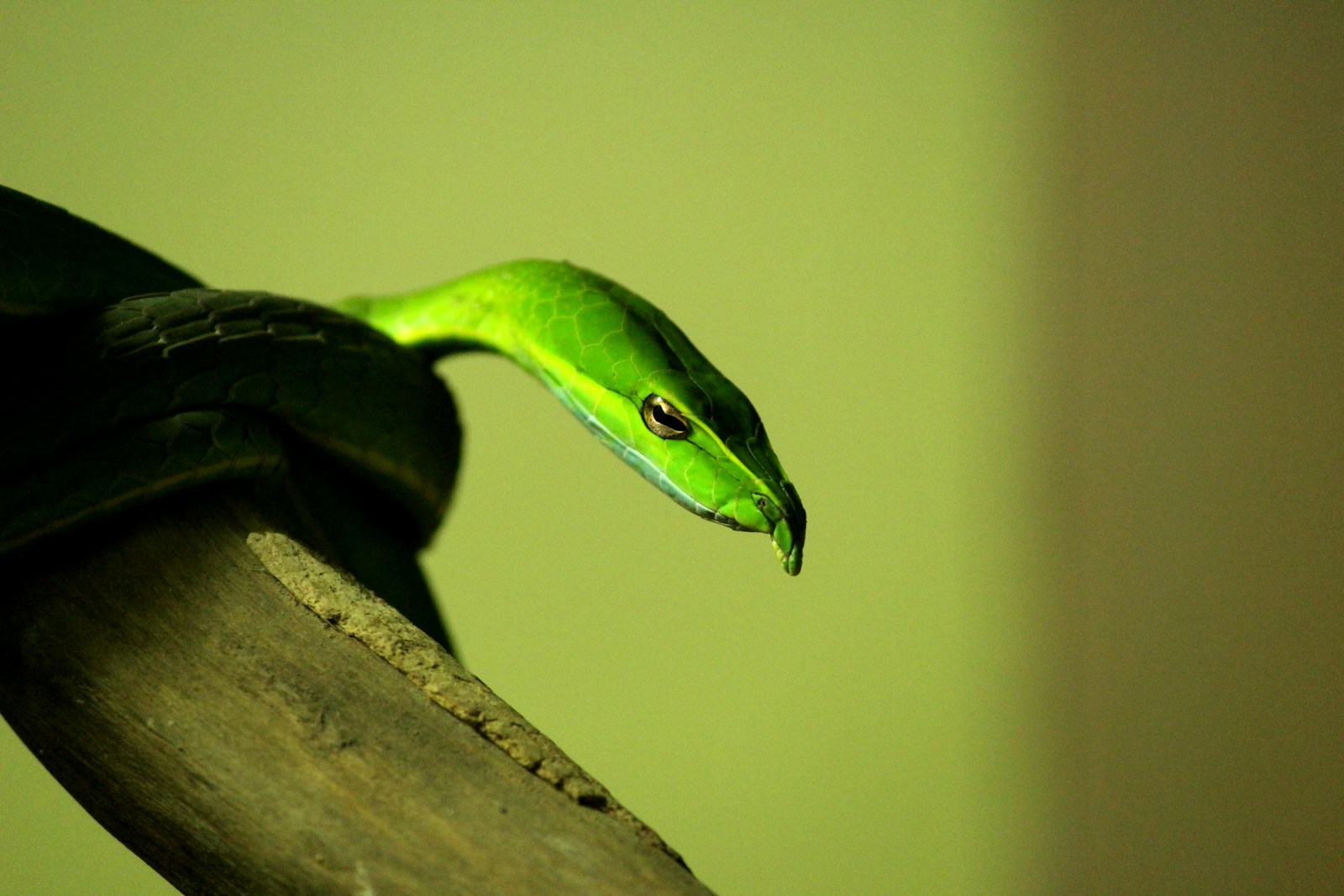In the shadowy depths of forests around the world, nature has perfected the art of deception. Among its most skilled practitioners are certain snake species that have evolved remarkable abilities to mimic vines, roots, and branches. These serpentine masters of disguise blend so seamlessly with their surroundings that they often remain invisible to both prey and predators alike. Their elongated bodies, specialized coloration, and distinctive behaviors allow them to create perfect imitations of plant life, demonstrating one of evolution’s most fascinating examples of mimicry. This extraordinary adaptation not only showcases the incredible diversity of snake species but also highlights how natural selection has shaped these creatures into living camouflage experts.
The Vine Snake: Nature’s Perfect Impersonator
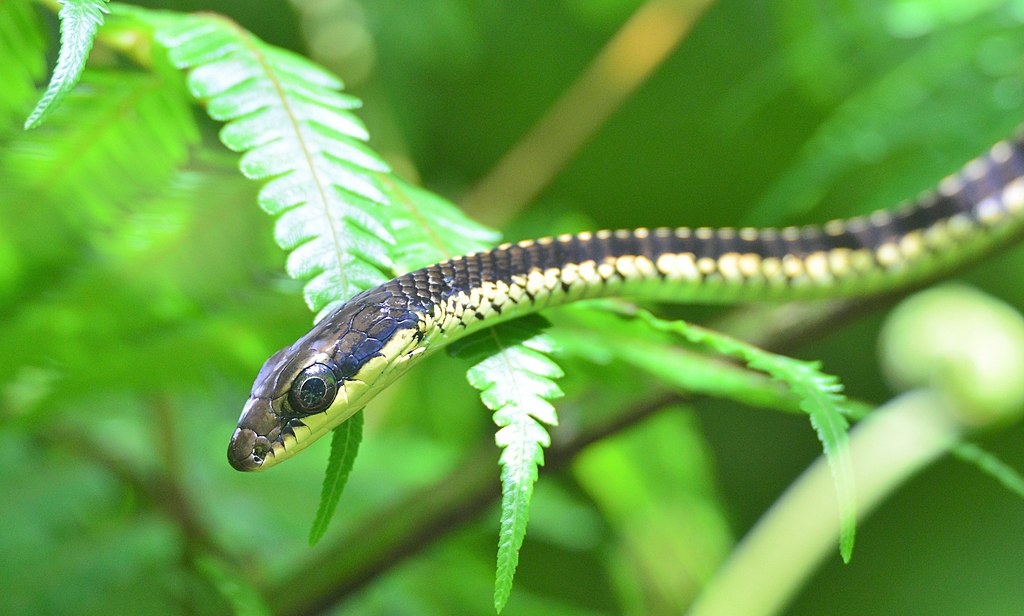
The Asian vine snake (Ahaetulla prasina) represents perhaps the most accomplished plant mimic in the serpent world. With its slender, elongated body that can stretch up to 6 feet in length, this remarkable reptile possesses a vivid green coloration that matches the fresh vines and stems of its tropical forest habitat. Its most distinctive feature is an extremely pointed snout that resembles a vine’s growing tip, complete with a slight curve that enhances the illusion. When motionless, the vine snake will often position itself in a zigzag pattern among actual vines, making its body virtually indistinguishable from the surrounding vegetation. These snakes can remain perfectly still for hours, swaying only slightly with the breeze just as a real vine would, completing their masterful disguise.
Evolutionary Advantages of Plant Mimicry
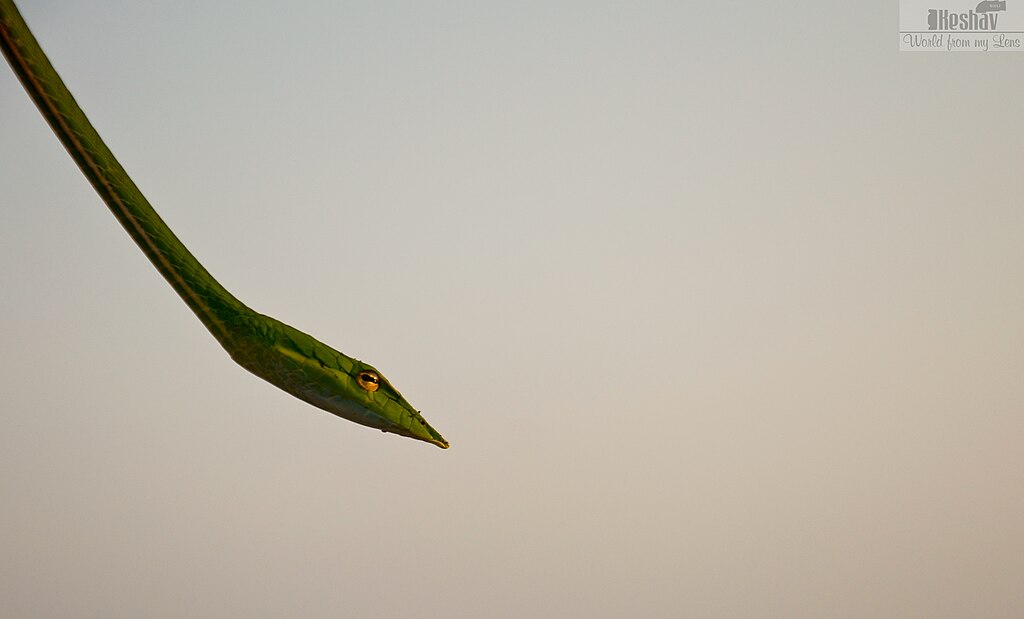
The ability to resemble plants offers vine snakes and their relatives significant survival advantages in their ecological niches. Primary among these benefits is predator avoidance, as birds of prey, larger snakes, and mammals that might otherwise hunt these thin-bodied serpents often pass right by them, mistaking them for harmless vegetation. This mimicry also serves as an exceptional hunting strategy, allowing these snakes to ambush unsuspecting prey that fails to recognize the danger lurking within what appears to be simple foliage. Research has shown that vine snakes with more perfect mimicry tend to have higher hunting success rates, creating evolutionary pressure that has refined this remarkable adaptation over millions of years. Additionally, this specialized body shape allows these snakes to navigate the complex three-dimensional environment of forest canopies with exceptional agility, further enhancing their survival prospects.
The African Twig Snake: Deadly Disguise
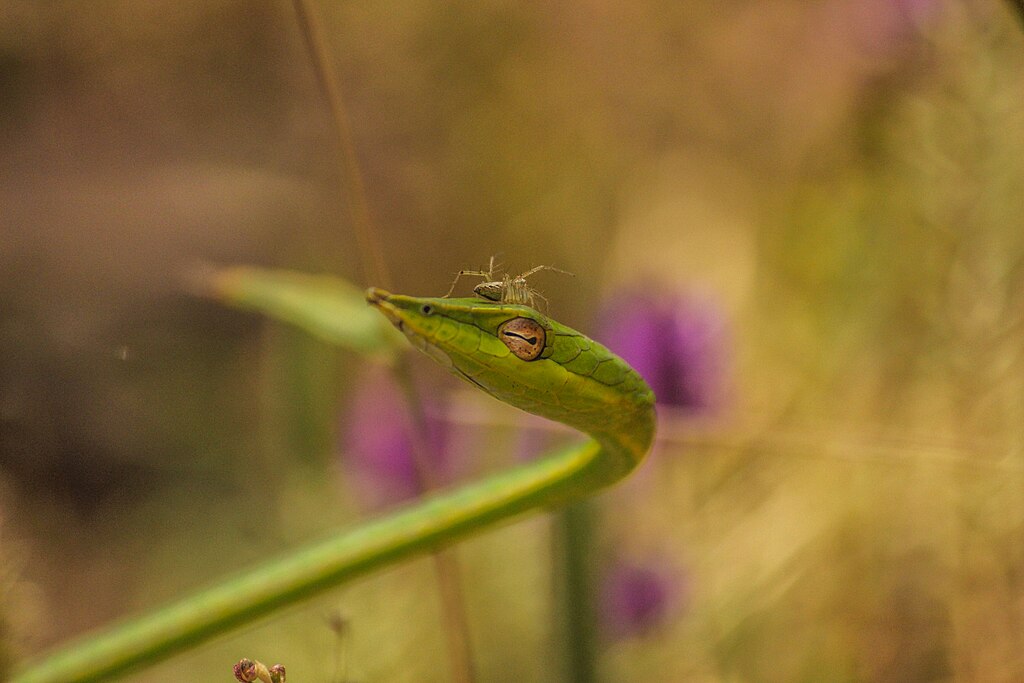
The African twig snake (Thelotornis kirtlandii) has perfected a different but equally effective form of plant mimicry. Unlike its Asian counterpart, this snake mimics dead or dying twigs, complete with a mottled brown and gray coloration that resembles bark with lichen growths. When threatened, the twig snake will extend its body to enhance the stick-like appearance, often holding completely motionless with only its occasional flicking tongue betraying its animal nature. Its extremely thin body can become rigid, further convincing potential predators that they’re looking at nothing more than a broken branch. What makes this disguise particularly dangerous is that the African twig snake is venomous, possessing a potent hemotoxic venom that it delivers through rear-fanged bites to unsuspecting prey that ventures too close to what appears to be a harmless twig.
Physical Adaptations for Plant Imitation
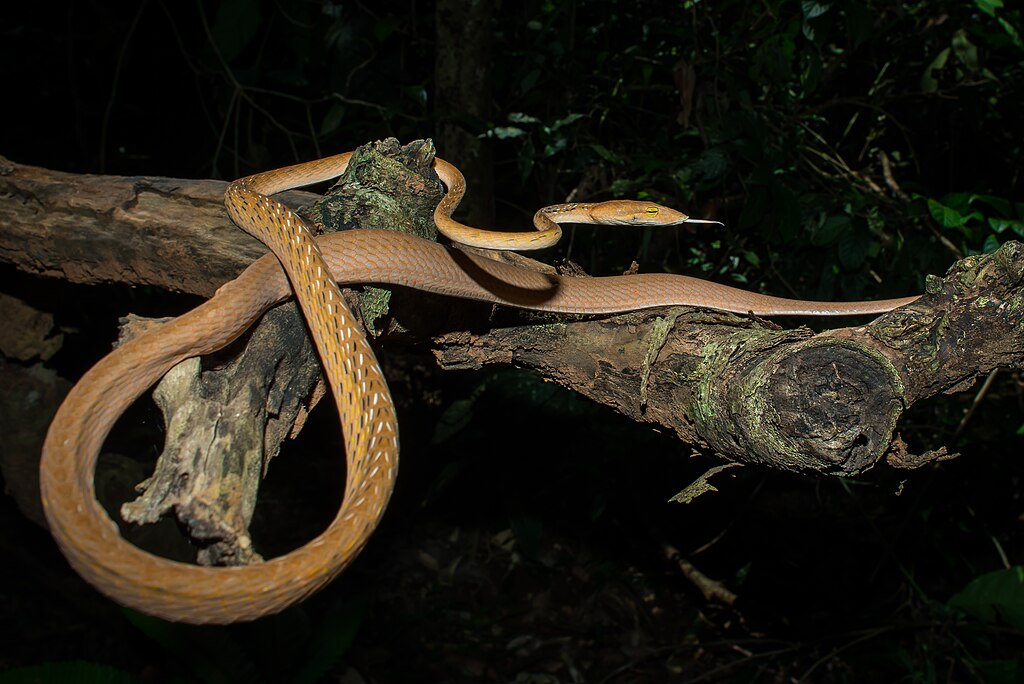
The remarkable mimicry achieved by vine snakes involves complex physical adaptations beyond mere coloration. Their bodies have evolved to be exceptionally slender, sometimes appearing almost two-dimensional when viewed from certain angles, matching the width profile of actual vines and twigs. Specialized scales on these snakes often feature microscopic ridges and patterns that mimic the texture of plant bark or stem surfaces when examined up close. The head shape of vine-mimicking species has evolved to be extremely elongated, helping complete the illusion of a growing vine tip or terminal bud. Perhaps most impressive is the modified vertebral structure that allows these snakes to maintain rigid, straight-line postures for extended periods without muscle fatigue – a crucial ability for a creature pretending to be an inanimate plant part.
Behavioral Components of the Disguise
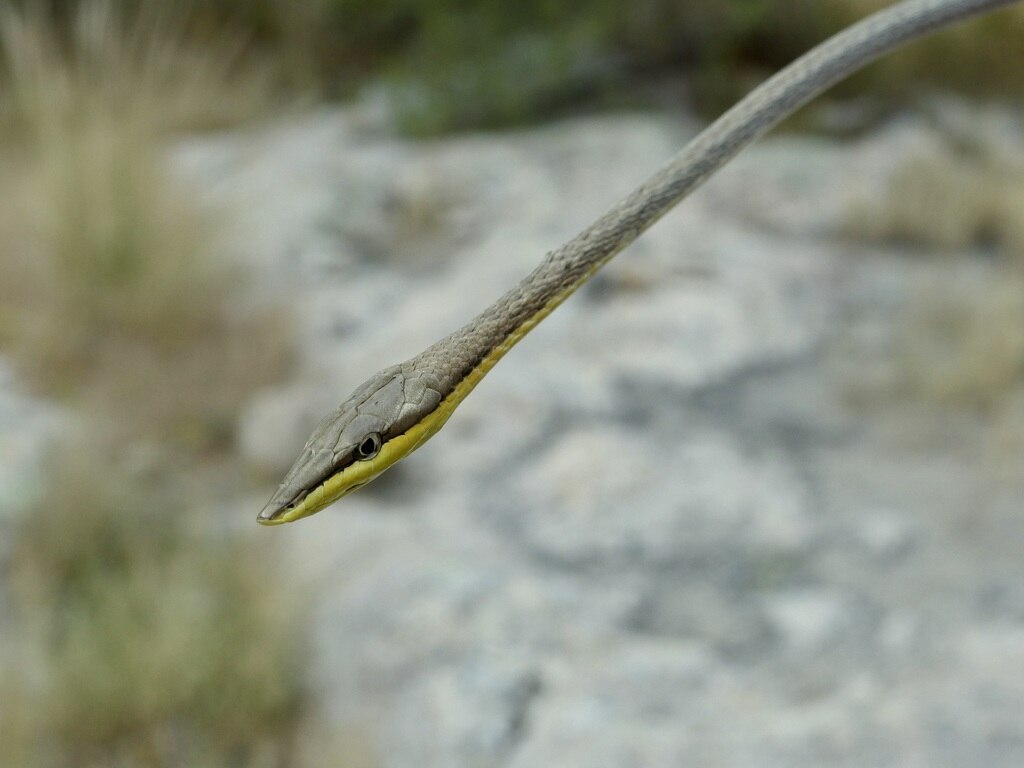
The vine-mimicking behavior of these specialized snakes goes beyond mere physical resemblance and incorporates sophisticated behavioral adaptations. When moving, they do so with a slow, deliberate swaying motion that perfectly imitates the gentle movement of vines and branches being stirred by forest breezes. Some species will even allow themselves to be blown about by stronger winds rather than resisting, maintaining their plant-like illusion even in challenging conditions. When hunting, these snakes will often position themselves along actual vines or branches, aligning their bodies to create unbroken lines that blend seamlessly with the real plant structures. Researchers have observed that during threatening situations, rather than fleeing like most snakes, vine mimics will often freeze in place, betting their survival on their exceptional camouflage rather than speed – a behavioral adaptation that completes their botanical disguise.
The South American Vine Snake’s Unique Adaptations
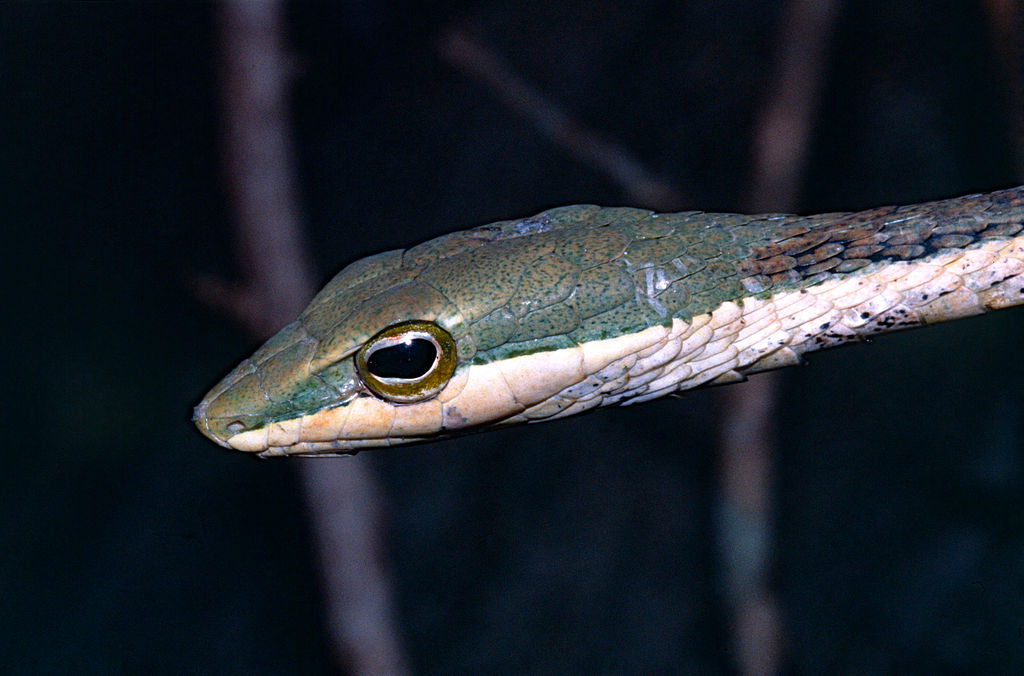
The South American vine snake (Oxybelis fulgidus), also known as the green vine snake, has developed its own regional variations on plant mimicry. This species features a brilliant emerald green body with a distinctive white or yellow ventral stripe that helps break up its outline when viewed from below against the forest canopy. Unlike some other vine mimics, the South American variant possesses mildly venomous properties, delivered through enlarged rear fangs that help it subdue the small birds and lizards that make up its preferred diet. Its most distinctive feature is an exceptionally pointed snout that extends well beyond its mouth, creating a perfect imitation of a new vine shoot complete with a growing tip. When threatened, this snake can flatten its body laterally, transforming its cylindrical shape into a ribbon-like form that more closely resembles a leaf or flattened vine segment.
Root-Mimicking Specialists

While vine mimics receive much attention, certain snake species have evolved to resemble underground plant structures instead. The root-mimicking snakes, including several species from the Atractaspis genus (burrowing asps), possess cylindrical bodies with minimal tapering and coloration that matches the earthy tones of roots and soil. Their scales often have a slightly glossy quality that mimics the moist surface of underground roots, and their movements are slow and deliberate, similar to the gradual extension of growing root systems. These specialized mimics spend much of their lives below ground, where their disguise helps them ambush prey while avoiding detection by burrowing predators like moles and larger snakes. Unlike their arboreal vine-mimicking cousins, these snakes have evolved stout, powerful bodies that excel at pushing through soil rather than hanging from branches.
Habitat Specificity and Mimicry Variation

The effectiveness of plant mimicry in snakes is directly tied to their specific habitat, resulting in remarkable regional variations across species. Vine snakes found in seasonally dry forests often display brownish or yellowish coloration during dry months, matching the appearance of dormant or drought-stressed vegetation. In contrast, those same species may develop more vibrant green coloration during rainy seasons when the vegetation flourishes, demonstrating a dynamic adaptation to changing environmental conditions. High-altitude vine mimics tend to have stockier builds than their lowland counterparts, corresponding to the sturdier, wind-resistant plant growth patterns found at elevation. Perhaps most remarkable are the micro-habitat specialists that have evolved to mimic not just any plant, but specific plant species found in their exact ecological niche – some Asian vine snakes, for instance, bear an uncanny resemblance to particular bamboo species found in their limited range.
Feeding Strategies of Vine-Mimicking Snakes
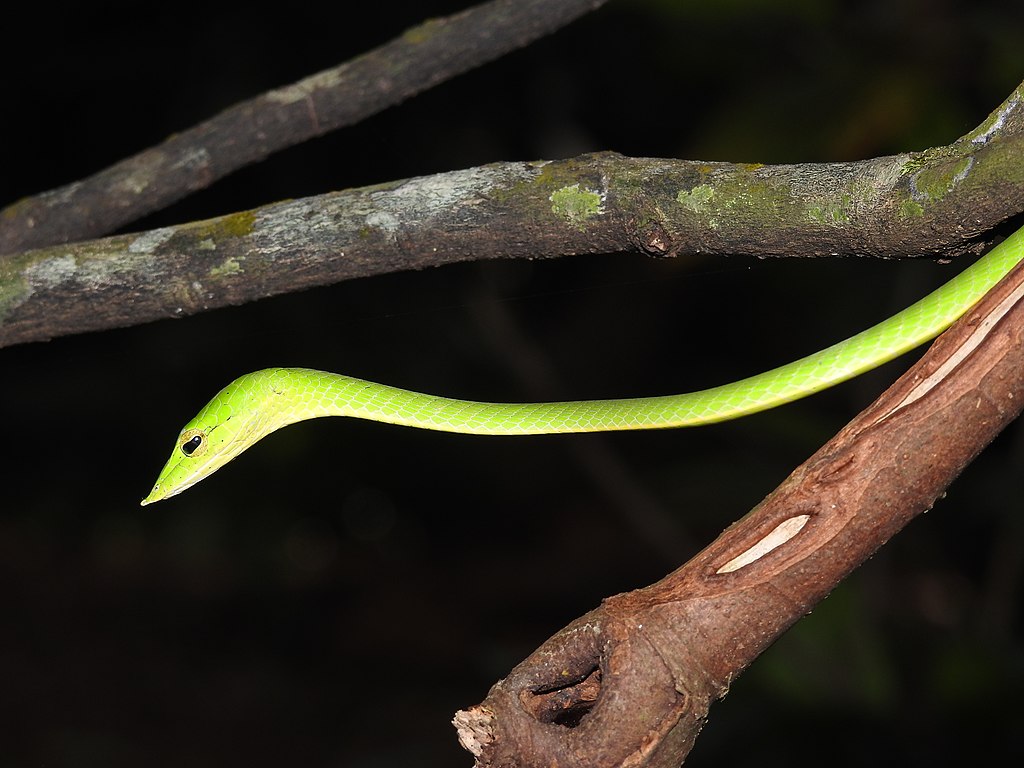
The specialized morphology of vine snakes directly influences their hunting techniques, creating unique predatory strategies. These snakes are primarily visual hunters, possessing large, forward-facing eyes with keyhole-shaped pupils that provide excellent depth perception – crucial for a predator that strikes with pinpoint accuracy from a stationary position. Most vine mimics employ an ambush strategy, remaining motionless along actual vines or branches until suitable prey approaches within striking distance. Their diet typically consists of small vertebrates that inhabit the canopy environment, particularly lizards, frogs, and small birds that fail to distinguish the snake from surrounding vegetation. When striking, vine snakes do not coil and launch like many other species, but instead extend forward in a straight-line lunge that maintains their stick-like appearance until the very last moment, a motion sometimes described as “reaching” rather than striking.
Conservation Challenges for Specialized Mimics
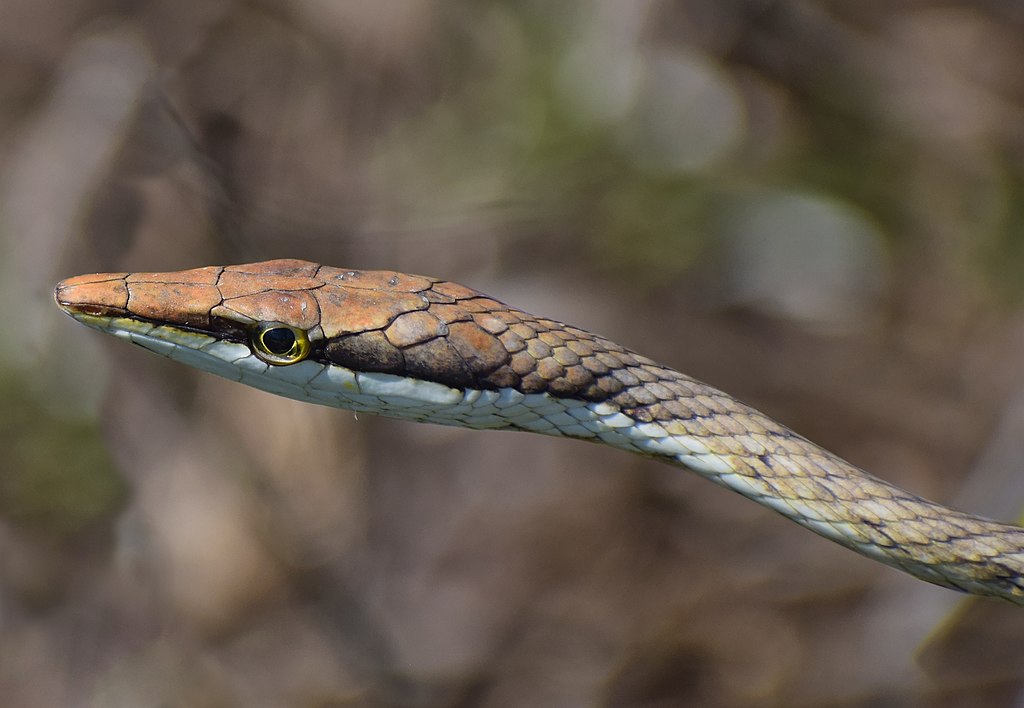
The highly specialized nature of vine-mimicking snakes makes them particularly vulnerable to habitat disruption and environmental changes. Deforestation represents the most immediate threat, as these species depend on intact forest canopies with diverse vegetation structure to both hunt effectively and avoid their own predators. Climate change poses additional challenges, potentially disrupting the synchronization between snake coloration cycles and vegetation changes in seasonal forests. Many vine snake species have relatively small geographic ranges, further increasing their vulnerability to localized environmental threats and habitat fragmentation. Conservation efforts are complicated by the secretive nature of these snakes, which makes population assessments difficult, while their specialized dietary needs often make them challenging to maintain in captive breeding programs designed to preserve genetic diversity.
Cultural Significance and Human Interactions
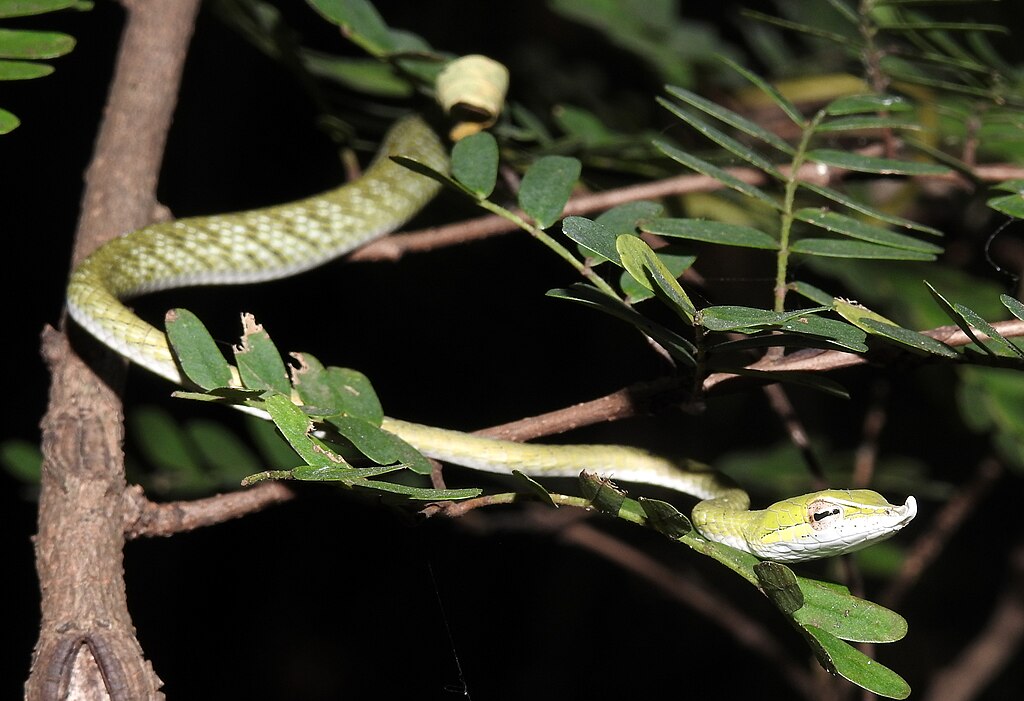
Throughout history, vine-mimicking snakes have featured prominently in the folklore and cultural practices of indigenous peoples living alongside these remarkable reptiles. In parts of Southeast Asia, certain vine snake species are considered omens of agricultural prosperity due to their resemblance to healthy growing plants, while in some African traditions, the twig snake’s exceptional camouflage has made it a symbol of hidden wisdom and the importance of looking beyond surface appearances. Early Western naturalists were so convinced by the disguise of these snakes that some specimens were initially cataloged as unusual plant specimens rather than animals, leading to amusing corrections in scientific literature. Despite their often harmless nature, the startling experience of discovering that what appeared to be a vine is actually a living snake has contributed to ophidiophobia (fear of snakes) in regions where these mimics are common, though education efforts highlighting their ecological importance are helping to change public perception.
Scientific Research and Ongoing Discoveries
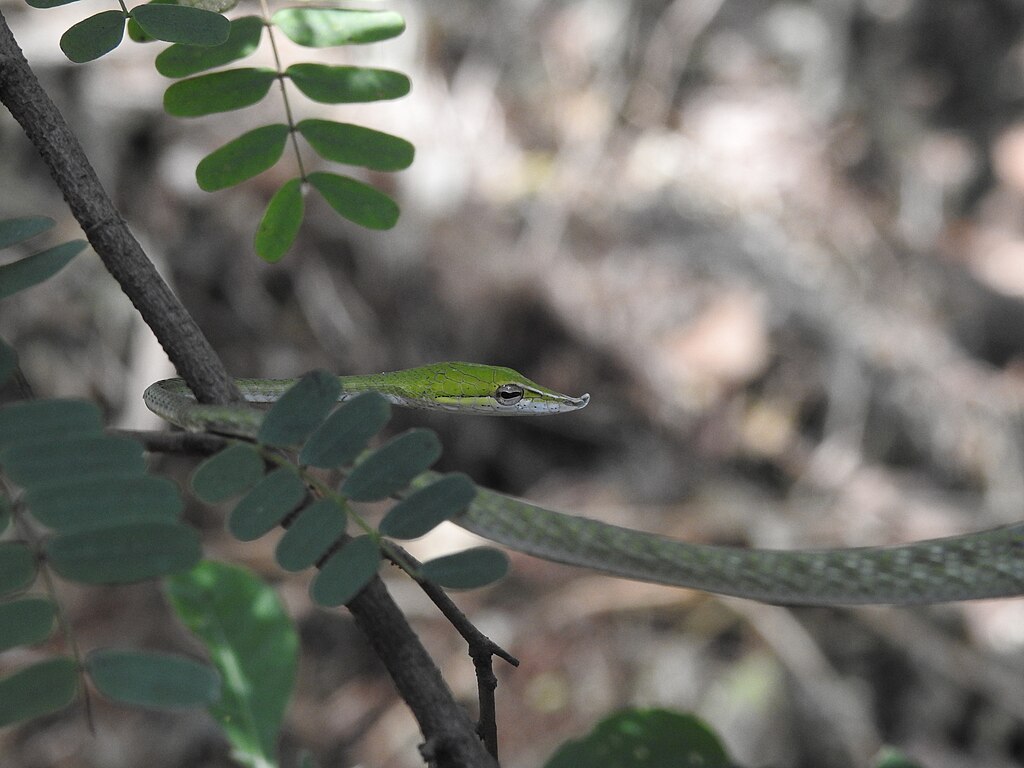
The field of herpetology continues to reveal new insights about vine-mimicking snakes, with recent research focusing on the genetic basis of their specialized adaptations. DNA sequencing has revealed that this form of mimicry has evolved independently multiple times across different snake lineages, representing a fascinating example of convergent evolution in response to similar ecological pressures. Behavioral studies using high-speed cameras have documented previously unknown hunting techniques, including the discovery that some vine snake species can adjust their strike speed based on the alertness level of their prey, moving with exceptional slowness when necessary to maintain their disguise. Taxonomic work continues to identify new species of plant-mimicking snakes, particularly in under-explored regions of Southeast Asia and Central Africa, where biological surveys regularly encounter previously undocumented variations. Perhaps most exciting is emerging research on the neurological adaptations that allow these snakes to maintain their rigid, plant-like postures for extended periods without triggering the muscle fatigue that would affect most other reptiles.
Captivating Conclusion: Masters of Botanical Deception

The remarkable evolutionary journey of vine and root-mimicking snakes represents one of nature’s most sophisticated examples of adaptive camouflage. These living sculptures have transformed their bodies into perfect imitations of plant life through millions of years of natural selection, developing specialized morphology, coloration, and behaviors that allow them to disappear in plain sight. As we continue to study these masters of disguise, they offer valuable insights into evolutionary processes and the incredible adaptability of life on Earth. Their specialized existence also serves as a powerful reminder of the intricate ecological relationships within forest ecosystems and the importance of preserving these habitats. In the complex tapestry of life, vine-mimicking snakes stand out as extraordinary examples of how the line between animal and plant can blur through the artistic genius of evolutionary adaptation.

